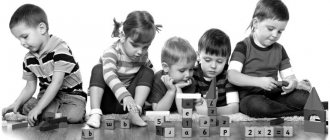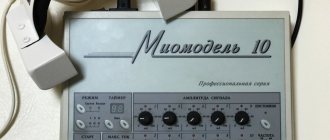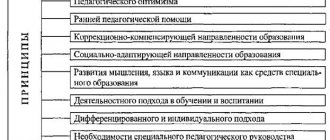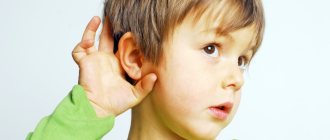Timely development of speech is an important part of the development of the personality as a whole.
It is by communicating with others that the child develops intellectually and mentally. Lagging behind peers can lead to not the best results. Cute babbling and mangling of words at a year and a half turns into a big problem at an older age. By the age of 4-5, a child should be able to speak his native language correctly - When should a child start speaking? Norms in speech development. Uninformed parents may rely on the widespread belief that before the age of 5 it is too early to contact a speech pathologist. Like, each child develops individually, and yours is about to speak in detailed sentences.
Is it worth waiting for weather by the sea?
The opinion of experts is definitely no! Undoubtedly, the individual pace of development cannot be denied, but what one could “turn a blind eye to” at 2 years old already requires correction at 4 years old.
The thing is that a problem that is not solved at an earlier age grows like a snowball, creating new ones. Without communication, a child cannot develop properly either intellectually or emotionally. The development of speech goes hand in hand with the mental development of the child. This means that correctional classes will require a lot of effort and time from both the specialist and the student himself.
At the age of 3 years, children’s speech is still in the process of formation, which means that there is not much catching up to do. The main thing is to find the cause in time and try to eliminate it.
What parents should be concerned about:
- By the age of 4-5 years, the child completely lacks coherent speech. By this age, the child should have completely outgrown baby babble and syllables instead of words. 13 ways to teach a child to speak.
- The child speaks, but his vocabulary is very poor. Some words are replaced by one or two syllables.
- The words do not agree with each other in the sentence.
- The child understands everything that is said to him and can fulfill the request, but cannot express his thoughts.
- There are many errors in speech, both lexico-grammatical and phonetic.
The easiest way to check if everything is okay with a child is to understand his statements from a stranger. Often in a family, only the mother understands what the child is saying. By the age of five, this is already a reason to contact a specialist.
Varieties and symptoms
With alalia, limitation or absence of speech are the initial signs of a systemic nature. With underdevelopment of speech of this type, a violation of lexical, grammatical, phonetic, phonemic and other speech components is observed.
These are general signs of alalia that are characteristic of all its varieties. One of the classifications of alalia provides for its division into the following types depending on the area of brain damage and the predominance of speech disorders in this regard: sensory, motor and mixed.
Sensory (impressive) or receptive alalia
This rare variant of neuropsychological linguopathology, which accounts for about 10% of all identified cases of alalia, is characterized by a disorder of auditory speech perception with complete preservation of auditory functions.
The baby hears speech perfectly well, but does not distinguish it from other sounds and does not understand the meaning. A common phenomenon with sensory alalia is the child’s mindless repetition of sounds, words and even sentences following the speech of an adult without understanding its meaning (echolalia). This and other characteristic symptoms of impressive alalia confirm that the baby’s hearing organs are healthy, and the cause of underdevelopment of speech is damage to those areas of the brain that regulate the analysis of speech sounds, in particular the auditory-speech analyzer.
The cause of damage to the Wernicke center, which is responsible for receptive speech, can be various factors, which are listed above as common to all types of alalia.
The clinical picture of sensory or receptive alalia, in addition to the mentioned echolalia, is characterized by the following symptoms:
- depending on the severity of the disease - the baby’s situational understanding of the speech addressed to him, complete indifference to speech sounds or sound stimuli from any source;
- the baby does not distinguish between human speech and non-speech sounds;
- lack of reaction to one’s own name or other affectionate addresses;
- increased speech activity, in which the majority is dominated by incoherent sound combinations in obsessive repetition, echolalia, the meaning of which the child does not understand;
- lack of correlation between an object or phenomenon and its verbal designations, which becomes the reason for communicating with adults using gestures;
- the child’s own speech does not cause a critical attitude towards it;
- impulsiveness in behavior;
- refusal to use speech, refusal to communicate;
- frequent combination with other speech pathologies and mental disorders.
The above-described behavior and speech of the baby is a reason for parents to contact the speech therapy department of the nearest clinic of the NEARMEDIC network as soon as possible. Experienced children's speech therapists, together with neurologists, psychologists, and otolaryngologists, will conduct consultations, psychological and pedagogical testing, and prescribe diagnostic procedures for the physical condition.
Based on the results of examination, testing, hardware and laboratory examinations, differential diagnosis from hearing loss, autism, aphasia and other pathologies with similar symptoms, an accurate diagnosis of the disease, its causes and severity of development will be established, and a comprehensive treatment plan will be developed individually for each young patient.
Complex therapy, depending on the severity of speech disorders, can last for 2-4 years and include:
- drug therapy aimed at activating the central nervous system;
- physiotherapy – massage, physical therapy;
- speech therapy - classes with a children's speech therapist are aimed at eliminating meaningless speech activity, developing auditory perception of speech, and the ability to analyze spoken speech;
- neuropsychological correction, if necessary, with the involvement of parents and other close relatives.
The reasons for the lack of speech may be more serious
Another important point is the fact that undeveloped speech at the age of 4-5 years may be a manifestation of certain psychological or neurological disorders. This is a reason not only to read books with your child more often, but also to use the help of qualified specialists. Among the causes of speech delay, in addition to physiological lag, mental disorders can also be identified:
- Stress. A strong shock experienced by a child can completely stop the development of speech. Only a specialist can talk to him, and the risk of stuttering due to fear is very high.
- A difficult psychological atmosphere at home can also lead to speech delays.
- Delayed psychomotor and mental development, accordingly, inhibits the formation of speech skills. Therefore, it is extremely important to monitor the child, especially those who speak poorly.
- A separate important point should be highlighted neurological causes as a result of a difficult pregnancy or difficult childbirth, head injuries, or even simply too frequent falls of the child. Experts, based on observations, have concluded that in more than 50% of cases, delayed speech formation is a consequence of MMD (minimal cerebral dysfunction).
About the disease
Delayed speech development is a term and concept located at the intersection of child neurology and speech therapy.
A child in early and middle childhood masters his native language much more slowly than his peers. This diagnosis is first made to children under 3-4 years of age. The formation of all components is delayed:
- sounds characteristic of early childhood;
- vocabulary;
- constructing a grammatical structure;
- constructing phrases;
- coherent speech.
The incidence of RRD reaches 10%; the problem occurs four times more often in boys.
Delayed speech development also inhibits age-related mental development, which is why the condition is referred to as DDRD - delayed psycho-speech development.
This problem is borderline; doctors, speech therapists and medical psychologists equally take part in the treatment and rehabilitation of such children.
When silence is not golden
Problems with sound pronunciation, clarity and coherence of speech directly affect such mental processes as memory, thinking, attention, etc. This means that prolonged non-speaking leads to deeper disorders. At 4-5 years old, a non-speaking child is diagnosed with OSD - general underdevelopment of speech against the background of normal intelligence and hearing. OHP can be of 4 levels, but any of them is a reason for correction. Considering the age of the children, by this time the gap from their peers is already quite significant, so you will have to study a lot and persistently.
Diagnosis of speech delay
Diagnostics includes a comprehensive examination by a group of specialists.
This group necessarily includes a pediatrician, a child neurologist, an ENT specialist, a psychiatrist, a speech therapist and, as appropriate, a child psychologist. The pediatrician evaluates age-related development, possible deviations, and the presence of somatic diseases. A neurologist may prescribe examinations such as EEG, ultrasound examination of the arteries of the head, and echoEG.
The ENT doctor examines hearing acuity and the presence of adenoid vegetations. The speech therapist examines the state of the speech apparatus, the formation of indicative reactions, and the possibilities of verbal and nonverbal (wordless) communication. A psychologist uses tests (Griffiths and Bailey scales) to study psychomotor development. The psychiatrist determines the presence or absence of mutism, mental retardation, autism spectrum disorders, and general speech underdevelopment.
The pediatric neurologist summarizes the study, prescribing treatment for the leading disorder that caused the delay in speech development.
What to do if a child does not speak at 4-5 years old?
If a child does not speak at the age of 4-5 or speaks in such a way that not everyone can understand him, this is a reason to turn to specialists! In order to correctly establish the cause of speech delay, an examination by several specialists will be required:
- neurologist;
- speech therapist-defectologist;
- otolaryngologist;
- psychologist.
Your local pediatrician can refer you to these specialists. Or you can always contact a specialized center that deals with speech development problems. Don't wait until it may be too difficult to correct violations - the earlier the problem is detected, the easier it is to deal with it!
Date of publication: 06/02/2016. Last modified: 05/09/2018.
Causes of delayed speech development
The reasons are divided into 2 large groups: medical and social.
- Medical causes are various pathological processes affecting the brain in utero or in early childhood. This group includes the consequences of intrauterine hypoxia, difficult childbirth, asphyxia, infections, malnutrition, and prematurity.
Young children may suffer from long-term or frequently recurring diseases, meningoencephalitis, and encephalopathy of various origins.
Speech delay can be hereditary: if one of the parents spoke late, then with a high degree of probability the child will have the same. The development of pronunciation may be delayed due to hearing loss. Speech is formed only by imitation, and hearing loss becomes an insurmountable obstacle.
- Social factors are pedagogical neglect, lack of family communication, living in a foreign language environment.
Pedagogical neglect is formed if the child is left to his own devices, no one works with him, and family contacts are of a formal nature.
These are “difficult” children who are characterized by behavioral disorders. Lack of family communication is a pathological stereotype of behavior in which there is no direct communication between relatives. Pressing problems are not discussed, there are no family holidays, no established traditions. People simply live under one roof, without developing spiritual kinship and practically without communicating.
Changing the country of residence in early childhood can also delay development. If one language is spoken at home, and another language is spoken in the children's group and on the street, it is very difficult for the child to master speech skills.
Uncertainty of hand dominance can interfere with development: right-handedness, left-handedness or ambidexterity. This is due to the predominance of activity in one of the hemispheres. If a child cannot decide for a long time, then speech is also delayed.
Overprotection also does harm: if the baby has no need to speak, since all his desires are predicted and instantly fulfilled, then there is no need to work.
There are 3 critical periods of speech development:
- from 1 to 2 years – under unfavorable conditions, alalia develops (severe underdevelopment or complete absence of speech);
- 3 years – under the influence of damaging factors, mutism (refusal of verbal communication) or stuttering occurs;
- From 6 to 7 years – after serious illnesses, the development of childhood aphasia or loss of previously formed speech is possible.
Treatment of speech delay (SRR, ZPRR) in the center of Dr. Leviticus
In the clinic of Dr. Lev Levit, a safe proprietary method of craniocerebral stimulation (from the Latin cranium - skull, cerebrum - brain) is used to treat speech delay. This method is aimed at improving biochemical processes in the brain lobes responsible for speech activity and communication.
The traditional approach to the treatment of delayed speech and psycho-speech development includes:
- speech therapy classes
- massage for motor development, speech therapy massage
- electroreflexotherapy
- drug treatment (nootropics, stimulants, neurotransmitters, etc.)
Drug treatment is not used at the center. Correction, speech training and speech therapy sessions with the child are not carried out during the course. However, after a course of treatment, children themselves begin to make progress in their speech, because the procedures affect the root cause of the delay in speech development.
With subsequent speech therapy correction and activities with the child, such children quickly overcome delayed speech development and are no different from their peers.
The technique of craniocerebral stimulation is aimed at improving the functioning of those parts of the brain that do not function well enough. In the case of mental retardation, the child’s speech activity improves.
The method circulates cerebrospinal fluid and, as a result, metabolism also improves in children with speech problems and general retardation.
Psychologists' opinions on this topic
Psychologist Yu. Burlan developed system-vector psychology, which examines in detail the functional causes of speech defects in children of five years of age. Speech problems are considered from the perspective of mental characteristics. Scientists introduced the concept of a vector, which is a set of innate character traits and behavioral psychotypes.
These factors are fundamental in the formation of speech characteristics. The author has identified several vectors. This technique for identifying the functional causes of speech development disorders in childhood allows us to identify the causes of speech defects and makes it possible to speak correctly.
It is necessary to consider vector groups of children who speak poorly at the age of 5 (4 vectors out of 8 are allocated for 5-year-olds):
- The skin vector is for active children. The child of this vector speaks very quickly, his pronunciation is incomprehensible. He is in a hurry, so his sentences are short and choppy. The structure of words is disrupted. For example, instead of the word “doctor”, they can say “dotcore”, instead of the word “mo-lo-tok” they will say a word like “to-mo-lok”, i.e. rearrange letters and syllables in words. They may not fully pronounce words. For example, instead of the word “ball”, they say “myaik”. These children have problems with hissing sounds and the letters R and L.
- Anal vector - characterizes slow and sluggish children. They constantly take breaths during conversations and lisp all the time. The structure of words in children of the anal vector is broken (the same as in skin children). When pronouncing some words, children soften the endings. For example: table - so, chair - chair. It is difficult for them to pronounce whistling sounds and R and L. For example, I want - I want it.
- The oral vector is children who tire others with their chatter. But at the age of five, such children speak unclearly and constantly swallow words. Such kids chatter loudly, without pausing between topics. They tend to often touch their fingers to their lips and place their hands on their cheeks. When speaking, the tongue is visible between the teeth. The tongue is especially noticeable when the child makes whistling sounds. There are no hisses in his speech. For example, his cat will sound like “koska”, iron like “ziezny”. He doesn’t pronounce the ending, pronounces the words casually, and makes up what to chat next on the fly. His thoughts are not always clear, he says a lot of unnecessary and unnecessary things, but everyone has to listen to him: both children and adults.
- Sound vector - 5 year olds are characterized by slurred pronunciation. These children are from the silent category. At the age of 5 years, such children can immediately begin to speak in long sentences. Such kids think well and can work with large amounts of information. These children, having begun to talk, catch up with their peers in speech development. Children of this type have a quiet voice, they ask a lot of questions, and often withdraw into themselves, moving away from the surrounding reality. Therefore, they tend to constantly ask again. Their speech is consistent, but with constant pauses. They do not always pronounce the sounds Ch, Z, Ts clearly. For example, the word clean is spoken as “shisty”, the word castle, they are pronounced as “zhamok”, the word heron, they say “saplya”. Such children sometimes seem strange and inhibited. Without recognizing the manifestation of a psychotype, an incorrect diagnosis of autism may be made. Therefore, this category of children must be examined quite carefully.








